Politics

 As we come up on 22 years since the September 11th terrorist attacks on our nation, I find myself feeling strangely shocked that the children born after the attacks are almost 22 years old. I know that is just logical, and shouldn’t be shocking at all, but it is. How can so many years have gone by since the 2,977 people from 102 countries, lost their lives in those senseless attacks? Many of those children might even be parents themselves by now. I’m sure the hole left by the dad they lost, feels massive. They have been robbed of their dad and very likely a grandpa for their children, and then of course there are all of the sons, daughters, parents, siblings, grandparents, friends and coworkers.
As we come up on 22 years since the September 11th terrorist attacks on our nation, I find myself feeling strangely shocked that the children born after the attacks are almost 22 years old. I know that is just logical, and shouldn’t be shocking at all, but it is. How can so many years have gone by since the 2,977 people from 102 countries, lost their lives in those senseless attacks? Many of those children might even be parents themselves by now. I’m sure the hole left by the dad they lost, feels massive. They have been robbed of their dad and very likely a grandpa for their children, and then of course there are all of the sons, daughters, parents, siblings, grandparents, friends and coworkers.
On September 11, 2001, nineteen terrorists took it upon themselves, and instructions of their evil leaders, and attacked a nation and a people who had done nothing to them. Hate is like that. There is no reason for it, they just look at different as something to hate. Sadly, that is the way of the world we live in. The attacks of 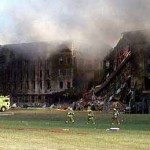
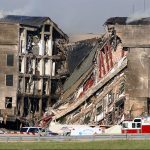 September 11 reminded us so clearly that we must always stay alert. The evil people around us will take any opportunity to act upon their hate if the people around them are not watchful. That is also why it is so important to secure our boarders, and properly vet anyone who is to be given any kind of a visa here. These terrorists came is as “students” to learn to fly, or actually crash planes into the buildings in our nation. They were never interested in learning to land, because they had no intention of landing.
September 11 reminded us so clearly that we must always stay alert. The evil people around us will take any opportunity to act upon their hate if the people around them are not watchful. That is also why it is so important to secure our boarders, and properly vet anyone who is to be given any kind of a visa here. These terrorists came is as “students” to learn to fly, or actually crash planes into the buildings in our nation. They were never interested in learning to land, because they had no intention of landing.
We had long ago stopped our careful watch concerning hijacking planes, because we didn’t believe that hijacking was something that happened anymore…until it happened, and the attackers had our planes with no intention to take them anywhere but into destruction. We can never again afford to let our guard down. As the old saying goes, “Evil flourishes when good men do 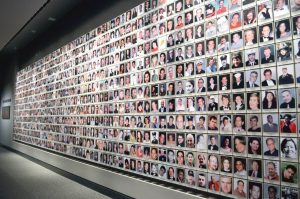
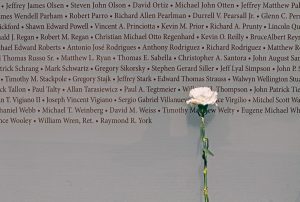 nothing.” That is so very true, and evil did flourish, because we didn’t stop it. It may be 22 years since the last attack on our nation, but we can never stop being on our guard, because the world we live in is looking for a way to take us out, and it is our job to protect those around us. We must “Never Forget” the 9-11 attacks, nor the lives we lost in that horrific attack. Continuing to pray for the families of those we lost.
nothing.” That is so very true, and evil did flourish, because we didn’t stop it. It may be 22 years since the last attack on our nation, but we can never stop being on our guard, because the world we live in is looking for a way to take us out, and it is our job to protect those around us. We must “Never Forget” the 9-11 attacks, nor the lives we lost in that horrific attack. Continuing to pray for the families of those we lost.
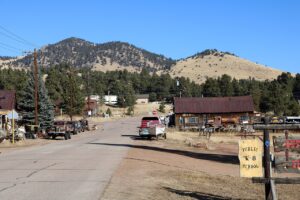
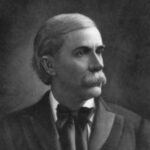 The town of Guffey, Colorado got its start in 1890 with the promise of gold and big money. It quickly attracted prospectors from all over the country. The Cripple Creek mine was just 30 miles away from town, and so the town was the perfect supply hub for mining claims that were expected to spring up between Cripple Creek and Guffey. When Guffey was established, the mining camp was called Idaville, but shortly thereafter its name was changed to Freshwater.
The town of Guffey, Colorado got its start in 1890 with the promise of gold and big money. It quickly attracted prospectors from all over the country. The Cripple Creek mine was just 30 miles away from town, and so the town was the perfect supply hub for mining claims that were expected to spring up between Cripple Creek and Guffey. When Guffey was established, the mining camp was called Idaville, but shortly thereafter its name was changed to Freshwater.
Guffey was actually legally incorporated in 1895, and it was immediately booming as a mining, lumbering, and ranching community. The Freshwater Mining District wasn’t just about gold mines. The area also produced copper, lead, and other minerals. The minerals that could be mined in the area made Guffey a center of activity. For most, gold was the big draw, mostly because they didn’t understand the value of the other minerals, like we do now, with new technologies and new uses for minerals. On August 31, 1896, the Colorado Daily Chieftain reported, “All of the arrangements have been completed, and negotiations closed for the construction of a cyanide mill on Currant Creek, of a capacity of 60-tons per day. The mill is now assured beyond any doubt, and ground will be broken for its construction within a fortnight. The capitalists behind the enterprise are Roadhaven and Vanderpool, of Saint Louis, who have visited the camp several times, investigating our mines and ores, with William Goodman of Cripple Creek, who has been largely instrumental in consummating this enterprise. They claim to be able to treat $7 ore at a profit, which it is claimed will make of Freshwater the biggest camp in the world. The townspeople have guaranteed the company 50 tons of ore per day. This step locates Freshwater beyond the boundary of a prospecting camp and places it in the list of producers.”
The town would receive another name change in the late 1890s, this time due to the fact that there was another town with the same name in California. In honor of James McClurg Guffey, an oilman and capitalist, the town was named Guffey. The town was known throughout the region for its dances, which included lots of fiddlers and other musicians. Guffy reached its peak during this period, with over 500 residents and 40 businesses…most of which were brought in with the promise of gold.
While there were many mines and prospects around Guffey, the total production recorded was disappointingly minor. The cattle ranches and lumber operations located nearby supported Guffey while mining wasn’t profitable. In reality, the town was probably more suited for ranching anyway. Soon many of the businesses began to leave. The Park County Bulletin, dated January 17, 1902, stated, “With this issue, the GUFFEY PROSPECTOR will cease publication. This is due in part to the fact that the camp has another paper and to the additional fact that the Freshwater districts have failed, so far, to develop sufficiently to support a newspaper. The PROSPECTOR has for some time been published from the BULLETIN office, and while working faithfully for the camp, it has never been a paying investment. Those in the Freshwater districts who wish to settle their accounts with the paper can do so with Captain Sylvis at the Guffey post office. To those who wish it, the BULLETIN will be continued to their address, and we will try to make it meet their requirements as always up with the news of Park County. We still have faith in the Freshwater districts and believe that, when sufficient depth has been obtained, there will be pay mines made and profitable mining is done.”
Before long, the people started to move away too. While Guffey still exists today, the community has only around 49 residents and relies heavily on tourism. There are still several of the original structures remaining and are actually occupied. The others have been kept up, though empty, so that the town can keep its historic value and possible income potential for the future. The town currently has a charter school, restaurant, small museum, and more. Guffey continues to be the center of activity for nearby ranches, some of which are Park County Historic Landmarks, including the Aspen Creek/Bener/Moore Ranch, Campbell Ranch, and Thirty-One-Mile Ranch. So, while the town’s size has dwindled, its usefulness has not. Guffey also sits in a very scenic area created by three ancient volcanoes. The Guffey volcanic center is part of the Thirty-nine Mile Volcanic area, the largest remnant of the Central Colorado volcanic field. There are two mineral springs just a mile south of Guffey, that feature spring waters bubbling up from large mounds over 20 feet high and 50 feet across.
Sadly, not all is well in Guffey. As in any town, crime can happen. In January 2001, the bodies of three members of the Dutcher family were found near Guffey. They had been murdered. Later, three teenagers were convicted of the crime. Apparently these three boys had decided to form a paramilitary organization. They were supposedly practicing for future action they planned to take in the country of Guyana. The murders were part of their “practice sessions.” The brutal nature of the crime and its bizarre motive attracted national attention, but really not the kind of attention that the town wanted to be famous for.
The town does have some real oddities that it doesn’t mind being famous for. It would be considered a “somewhat ghost town” and strangely, has a habit of electing animals as Mayor. In fact, while the two main political parties are the Democrats and the Republicans, the current Mayor, Monster the Cat was elected in 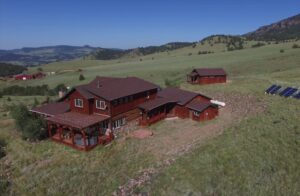
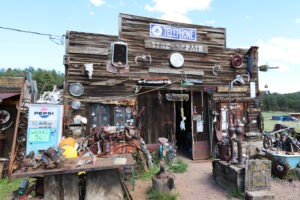 1998. Lydia Reynolds of Guffey’s 31 Mile Ranch and Bill Sioux of Guffey Garage left us a comment confirming Monster was still alive and well…as of November 2019 anyway. I suppose that in a small town, you could get away with an animal as mayor, but for most of us, that would definitely be odd. Nevertheless, I guess it just adds to the charm of this quaint, old town.
1998. Lydia Reynolds of Guffey’s 31 Mile Ranch and Bill Sioux of Guffey Garage left us a comment confirming Monster was still alive and well…as of November 2019 anyway. I suppose that in a small town, you could get away with an animal as mayor, but for most of us, that would definitely be odd. Nevertheless, I guess it just adds to the charm of this quaint, old town.

 My grandniece, Aurora Hadlock is growing up before our very eyes. She is in her second year of middle school this year and it is her first year in middle school without her brother, Ethan, who is in high school now. Aurora will be playing volleyball at school this year. She really loves playing and is good at it. I know it’s going to be a great year. While Aurora loves summer with all its free time and fun, she really never gets tired of school, with its activities. She is a social kind of girl, and likes being around other kids…especially her cousins.
My grandniece, Aurora Hadlock is growing up before our very eyes. She is in her second year of middle school this year and it is her first year in middle school without her brother, Ethan, who is in high school now. Aurora will be playing volleyball at school this year. She really loves playing and is good at it. I know it’s going to be a great year. While Aurora loves summer with all its free time and fun, she really never gets tired of school, with its activities. She is a social kind of girl, and likes being around other kids…especially her cousins.
Aurora loves school, and in her mom, Chelsea Hadlock’s words, “She is still devouring books and going into her second year of Advanced Placement English.” Aurora loves anything with that has to do with words. Who knows, maybe she will become a writer. Aurora is a smart girl, and she gives things a lot of thought. That is likely why she loves English and  reading. Of course, when she was little, her big brother loved practicing his reading, and his favorite audience was his little sister. Ethan loved his baby sister so much, and while little girls might want to “mother” their siblings, Ethan really just wanted to make Aurora happy. He liked seeing her smile and laugh. Of course, he wasn’t above a little teasing either. It didn’t matter, because Aurora thought her brother was the “best thing since sliced bread.” And, she isn’t above teasing him either.
reading. Of course, when she was little, her big brother loved practicing his reading, and his favorite audience was his little sister. Ethan loved his baby sister so much, and while little girls might want to “mother” their siblings, Ethan really just wanted to make Aurora happy. He liked seeing her smile and laugh. Of course, he wasn’t above a little teasing either. It didn’t matter, because Aurora thought her brother was the “best thing since sliced bread.” And, she isn’t above teasing him either.
Aurora’s aunt, Lindsay Moore always has a unique way of thinking and speaking about people. Of Aurora, Lindsay says, “Aurora! Notorious for leaving a sock everywhere she goes! Aurora is the sweetest Aurora! Mackenzie and Adelaide delight in being with her! She and Ethan came to volunteer for vacation Bible school for a week! She got to help me with the preschooler group, and she was such a good little volunteer! She is fun loving, goofy, sweet and kind!” Aurora, Ethan, and cousins, Adelaide Sawdon and Mackenzie Moore have gone to Vacation Bible School each year, in Laramie with her 
 aunt, Lindsay Moore for a while now. Aurora and Ethan are too grown up now to go as a student now, so they go as volunteers, and this year Aurora was assigned to her Aunt Lindsay’s class. Aurora has always loved being a helper, and as a volunteer for the preschool group, she had a great time. Plus, she was working with her Aunt Lindsay, and that made it even more fun. Aurora is a sweet, happy girl and very good with little kids, so I know she had a blast. The preschool class might just be the most fun, because they got to play in soap bubbles. Entertaining preschoolers is harder, but I don’t know of a kid that doesn’t like to play in soap bubbles. Aurora had a great summer, and now she is ready to get this back to school. Her next journey is just beginning. Today is Aurora’s 12th birthday. Happy birthday Aurora!! Have a great day!! We love you!!
aunt, Lindsay Moore for a while now. Aurora and Ethan are too grown up now to go as a student now, so they go as volunteers, and this year Aurora was assigned to her Aunt Lindsay’s class. Aurora has always loved being a helper, and as a volunteer for the preschool group, she had a great time. Plus, she was working with her Aunt Lindsay, and that made it even more fun. Aurora is a sweet, happy girl and very good with little kids, so I know she had a blast. The preschool class might just be the most fun, because they got to play in soap bubbles. Entertaining preschoolers is harder, but I don’t know of a kid that doesn’t like to play in soap bubbles. Aurora had a great summer, and now she is ready to get this back to school. Her next journey is just beginning. Today is Aurora’s 12th birthday. Happy birthday Aurora!! Have a great day!! We love you!!
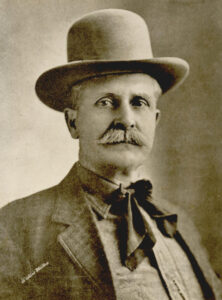 Many of the lawmen of the Old West started out as outlaws, and some of their careers continued to be “questionable” throughout their lives. The Three Guardsmen, was the name given to three lawmen who became legendary in their pursuit of many outlaws of the late 19th century. The men, Deputy US Marshals Bill Tilghman (1854–1924), Chris Madsen (1851–1944), and Heck Thomas (1850–1912) were working under US Marshal Evett “E D” Nix. Tilghman started out as a gunslinger before becoming part of the Three Guardsmen, but he might have been categorized as a “reluctant” gunslinger, since he only resorted to violence, when it was absolutely necessary. Madsen started a criminal career, resulting in several convictions for fraud and forgery, before he became a lawman and member of the Three Guardsmen. Thomas was twelve at the beginning of the American Civil War, when he accompanied his father and his uncle, Edward Lloyd Thomas, to war as a courier. He would have been the exception to the rule in the Three Guardsmen, because he was not an outlaw. Still, if you were going to be a lawman in those days, you had better know your way around a gun.
Many of the lawmen of the Old West started out as outlaws, and some of their careers continued to be “questionable” throughout their lives. The Three Guardsmen, was the name given to three lawmen who became legendary in their pursuit of many outlaws of the late 19th century. The men, Deputy US Marshals Bill Tilghman (1854–1924), Chris Madsen (1851–1944), and Heck Thomas (1850–1912) were working under US Marshal Evett “E D” Nix. Tilghman started out as a gunslinger before becoming part of the Three Guardsmen, but he might have been categorized as a “reluctant” gunslinger, since he only resorted to violence, when it was absolutely necessary. Madsen started a criminal career, resulting in several convictions for fraud and forgery, before he became a lawman and member of the Three Guardsmen. Thomas was twelve at the beginning of the American Civil War, when he accompanied his father and his uncle, Edward Lloyd Thomas, to war as a courier. He would have been the exception to the rule in the Three Guardsmen, because he was not an outlaw. Still, if you were going to be a lawman in those days, you had better know your way around a gun.
In 1889, the state of Oklahoma was in need of a serious “cleaning up” or at least part of it was. The Three Guardsmen were widely considered honest, dutiful, and capable, so I guess they must have turned over a new leaf in their careers. These marshals were responsible for suppressing much of the outlaw element in the Indian Territory and the surrounding area. It is said that they arrested more than 300 outlaws during the next decade, while killing several others. These marshals were all three had the reputation of being determined in their pursuit, regardless of bad weather. Each of the men was known for their unique tracking abilities. Oddly, the 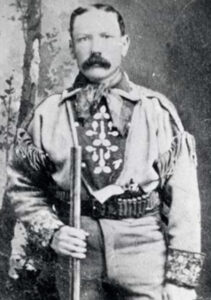 nickname Three Guardsmen was not given to them by the townspeople or the other lawmen, but rather by outlaws they pursued.
nickname Three Guardsmen was not given to them by the townspeople or the other lawmen, but rather by outlaws they pursued.
Thomas carried out a relentless pursuit of the Dalton Gang, during their outlaw career, and was specifically mentioned by gang member Emmett Dalton as one reason the Dalton Gang attempted to rob two banks simultaneously in Coffeyville, Kansas. Their plan was “to make one big score so that they could leave the territory for a time” and get away from Thomas. Resistance from the lawmen and citizens of Coffeyville to this robbery ended with the deaths of most of the members of the gang.
The Three Guardsmen are most famous for their pursuit of the Wild Bunch, or Doolin Gang, which included the surviving members of the Dalton Gang. The three lawmen eliminated many of the members of the Doolin Gang by systematically killing gang members who resisted them and arresting those who would surrender. They would let nothing slide, and they tracked them until they found them. Deputy Marshal Heck Thomas killed gang leader Bill Doolin. Deputy Marshal Chris Madsen led the posse that killed Doolin gang members “Dynamite Dan” Clifton and Richard “Little Dick” West. Deputy Marshal Tilghman was ultimately responsible for the death of Doolin gang member William F “Little Bill” Raidler. Other gang members were also captured or killed by them. Their law careers were filled with success stories that helped to rid the Old West of some of its most notorious killers.
Bill Tilghman retired in 1910 and was elected to the Oklahoma State Senate. On October 31, 1924, at the 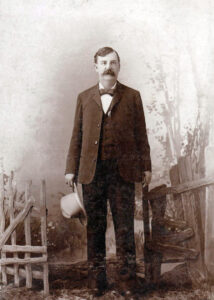 age of 70, Tilghman was murdered by a corrupt prohibition agent named Wiley Lynn, while serving as town Marshal for Cromwell, Oklahoma. The town was a wild place at that time. It was full of brothels, pool halls, and saloons. Tilghman might have been the only thing between the outlaw element and the town, because just one month after his death, the entire town was burned to the ground…leaving no buildings standing. Chris Madsen and other former law enforcement friends of Tilghman were believed to have been responsible, but no investigation into the arsons was ever conducted. I suppose it was a possible retaliation, but we will never know. The town of Cromwell never recovered, and as of the 2000 census, its population was less than 300.
age of 70, Tilghman was murdered by a corrupt prohibition agent named Wiley Lynn, while serving as town Marshal for Cromwell, Oklahoma. The town was a wild place at that time. It was full of brothels, pool halls, and saloons. Tilghman might have been the only thing between the outlaw element and the town, because just one month after his death, the entire town was burned to the ground…leaving no buildings standing. Chris Madsen and other former law enforcement friends of Tilghman were believed to have been responsible, but no investigation into the arsons was ever conducted. I suppose it was a possible retaliation, but we will never know. The town of Cromwell never recovered, and as of the 2000 census, its population was less than 300.
Madsen had retired in 1905 and died in 1944 at the age of 93, after living a relatively peaceful retired life. Heck Thomas retired in 1905, and in 1907 accepted a Chief of Police position in Lawton, Oklahoma. He died in 1912 of Bright’s disease.
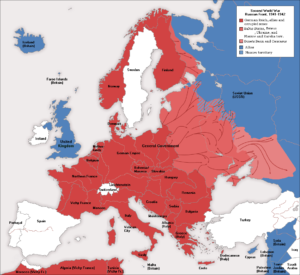
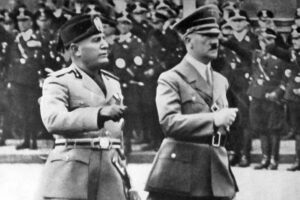 When countries choose sides in a war, there isn’t normally much chance that they will switch sides, but that is exactly what happened to Romania…and in fact, there were four countries that switched sides in that war, so maybe it isn’t so uncommon after all. At the start of the war Romania was allied and Poland and pro-British. They were trying to stay neutral, but that wasn’t easy. As the war progressed, Romania became more and more concerned about being overrun by the Soviet Union and the Fascist elements already in Romania. Finally, the decision was made to adopt a pro-German dictatorship and became an ‘affiliate state’ of the Axis Powers. The Romanian government signed the Tripartite Pact in November 1940. During the time that Romania supported the Axis powers, they supplied Nazi Germany and the Axis armies with oil, grain, and industrial products. Also, numerous train stations in the country, such as Gara de Nord in Bucharest, served as transit points for troops departing for the Eastern Front.
When countries choose sides in a war, there isn’t normally much chance that they will switch sides, but that is exactly what happened to Romania…and in fact, there were four countries that switched sides in that war, so maybe it isn’t so uncommon after all. At the start of the war Romania was allied and Poland and pro-British. They were trying to stay neutral, but that wasn’t easy. As the war progressed, Romania became more and more concerned about being overrun by the Soviet Union and the Fascist elements already in Romania. Finally, the decision was made to adopt a pro-German dictatorship and became an ‘affiliate state’ of the Axis Powers. The Romanian government signed the Tripartite Pact in November 1940. During the time that Romania supported the Axis powers, they supplied Nazi Germany and the Axis armies with oil, grain, and industrial products. Also, numerous train stations in the country, such as Gara de Nord in Bucharest, served as transit points for troops departing for the Eastern Front.
With all of this, Romania caught the eye of the Allies in 1943, and soon became a target for their aerial bombardment. One of the most notable air bombardments was the attack on the oil fields of Ploie?ti on August 1, 1943, known as Operation Tidal Wave. On April 4 and 15, 1944, Bucharest was subjected to intense Allied bombardment. On August 23, 1944, King Michael I removed the government of Ion Antonescu and declared Romanian support to the Allies. Then the Luftwaffe bombed the city Bucharest on August 24 and 25, 1944 in direct response to the Romania’s decision to switch sides. Some experts believe that by switching sides Romania helped shorten the war by several months. I’m sure that Romania was glad to be on the winning side of the war.
Romania was not the only nation to switch sides in Worls War II. They were Bulgaria, Finland, and Italy. Bulgaria also signed the Tripartite Pact in March of 1941, but Finland never signed it, but was nonetheless a co-belligerent on the side of the Axis Powers. Finland signed the Anti-Comintern Pact, an anti-communist agreement of mainly fascist powers, in November 1941. Italy had its own imperial ambitions, which were partly 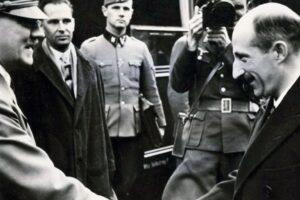
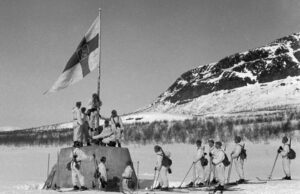 based on the Roman Empire and similar to the German policy of lebensraum, which clashed with those of Britain and France. No matter wat their aspirations were, all of these nations decided that the ways of Germany and Hitler were simply not ways they could live with, so they switched sides, joined the Allied Nations, further weakened Hitler to the point of causing his demise.
based on the Roman Empire and similar to the German policy of lebensraum, which clashed with those of Britain and France. No matter wat their aspirations were, all of these nations decided that the ways of Germany and Hitler were simply not ways they could live with, so they switched sides, joined the Allied Nations, further weakened Hitler to the point of causing his demise.
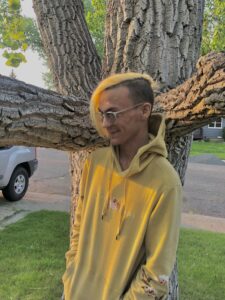
 When a boy becomes a man, it’s hard not to reflect on the boy he was, and what things brought him to the kind of man he has now become. For my grandnephew, Matthew “Matt” Masterson, that means thinking about the fact that he was the only son of my nephew, Rob Masterson and his wife, Dustie Masterson. Matt had three sisters, Christina Masterson (who lives in Colorado), Raelynn Masterson, and Taylor Masterson. Growing up with three sisters, Matt often found himself needing to be a man among his siblings, even though he was still a boy. Nevertheless, Matt stepped up to the plate.
When a boy becomes a man, it’s hard not to reflect on the boy he was, and what things brought him to the kind of man he has now become. For my grandnephew, Matthew “Matt” Masterson, that means thinking about the fact that he was the only son of my nephew, Rob Masterson and his wife, Dustie Masterson. Matt had three sisters, Christina Masterson (who lives in Colorado), Raelynn Masterson, and Taylor Masterson. Growing up with three sisters, Matt often found himself needing to be a man among his siblings, even though he was still a boy. Nevertheless, Matt stepped up to the plate.
Christina wasn’t with Matt as much as the other girls, so he didn’t have to protect her so much. Nevertheless, they were sibling friends, and they love each other very much. Raelynn probably needed her brother the most. She is just a little over two years older than Matt, but when it came to the things she “just couldn’t deal with,” Matt stepped up…literally. Raelynn was afraid of ants…to the point that she didn’t want to share the same sidewalk with them. I get it. Bugs in general just have no business being alive, and yes, I know that they each have their purpose, but not in my world. Matt, being the brave boy he 
 was, would walk in front of his sweet sister, and kill the ants, so the sidewalk was clear for he to walk. His sister, Taylor has a tender head, and her mom, Dustie, in a hurry to get three kids ready for school and such, just wasn’t gentle enough for Taylor. Enter Matt, he was very careful not to pull his sister’s hair, but he was still able to get it brushed and get her ready for school.
was, would walk in front of his sweet sister, and kill the ants, so the sidewalk was clear for he to walk. His sister, Taylor has a tender head, and her mom, Dustie, in a hurry to get three kids ready for school and such, just wasn’t gentle enough for Taylor. Enter Matt, he was very careful not to pull his sister’s hair, but he was still able to get it brushed and get her ready for school.
Matt is growing in the Lord too, and these days, he and his mom have been having mature conversations about God, politics, and other current events. Matt has a good grasp on what’s going on in the world and like his mom, he researches it from both angles to make a better-informed decision as to which side of the coin he is on. Matt will be voting in his first election this next year, and he is very excited to be able to participate in the election process. Matt has decided that he is a Republican, and that was after much research and making up his own mind. His mom very much encouraged, 
 because she always insisted that they all do their own research and decide for themselves. Matt took that very seriously. While Covid messed with Matt’s high school career, he plans to get his GED and wants to go to college. He hasn’t decided on a course of study yet, but he wants college. He truly is growing into a fine young man, and his parents are very proud of him. Today is Matt’s 18th birthday. Happy birthday Matt!! Have a great day!! We love you!!
because she always insisted that they all do their own research and decide for themselves. Matt took that very seriously. While Covid messed with Matt’s high school career, he plans to get his GED and wants to go to college. He hasn’t decided on a course of study yet, but he wants college. He truly is growing into a fine young man, and his parents are very proud of him. Today is Matt’s 18th birthday. Happy birthday Matt!! Have a great day!! We love you!!
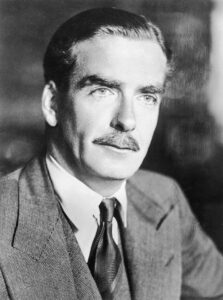 Out of necessity, comes innovation. Many of history’s great problems were solved because it was a necessity. For the most part, Britain has maintained a small British Army. Somehow, probably mostly due to geography, rather than might, the British Royal Navy was able to protect the island nation from its enemies quite well…until World War I, that is, and indeed, young men did not feel the need to join the army due to patriotic duty, but rather due to a shortage of other working options. In fact, a career in the military wasn’t looked upon favorably at all.
Out of necessity, comes innovation. Many of history’s great problems were solved because it was a necessity. For the most part, Britain has maintained a small British Army. Somehow, probably mostly due to geography, rather than might, the British Royal Navy was able to protect the island nation from its enemies quite well…until World War I, that is, and indeed, young men did not feel the need to join the army due to patriotic duty, but rather due to a shortage of other working options. In fact, a career in the military wasn’t looked upon favorably at all.
When World War I broke out in 1914, Britain suddenly experienced a huge shortage of trained military personnel, especially officers. This was further complicated by heavy casualties in the British Expeditionary Force in France, which dwindled the limited supply even further. That meant to keep up, they were going to need a large number of officers to be sourced and trained quickly. Their only real solution was to take young upper-class men and put them through officer training. These were teenagers, young men still in school, but it was necessary, and so schooling was either ended or postponed.
During World War I, as was seen with the RMS Titanic, class was considered of the utmost importance. In Britain, only a gentleman could be an officer. The working-class and lower-class men were put in as the average 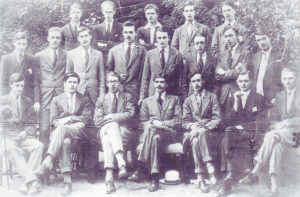 soldier. Somehow it was thought that “Short of actual military credentials, a person’s schooling was thought to be a reasonable litmus test for leadership.” To further confuse things in the minds of most Americans these days, a public school in Britain is actually a very exclusive private institution. Eton College, a private institution attended by no fewer than 20 prime ministers, is probably the best example of that. Anthony Eden, who would later become prime minister, was an Eton alum, who also served as an officer in the British Army.
soldier. Somehow it was thought that “Short of actual military credentials, a person’s schooling was thought to be a reasonable litmus test for leadership.” To further confuse things in the minds of most Americans these days, a public school in Britain is actually a very exclusive private institution. Eton College, a private institution attended by no fewer than 20 prime ministers, is probably the best example of that. Anthony Eden, who would later become prime minister, was an Eton alum, who also served as an officer in the British Army.
When World War I broke out, Eden was just 17, and after a rushed officer training course, he was commissioned as a second lieutenant a year later. It seems strange and almost reckless to have upper-class teenagers leading working-class soldiers, but in this case, it actually worked well. The teenage future prime minister recalled his men “were tolerant of me as we were all learning together.” Eden quickly learned that “As long as the officer showed proper concern for the well-being of his men and courage under fire, the men in turn would show great loyalty.”
The commissioned officers were also helped enormously by the noncommissioned officers. The 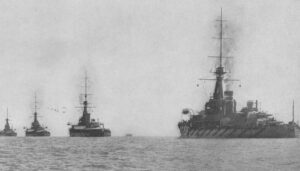 noncommissioned officers were usually working-class men who had been promoted from the ranks after showing leadership abilities throughout their military careers. Thankfully so, because as Eden would later recall of a sergeant named Arnold Rushworth in his post-war memoirs, “He was my right hand and no small part of my brain as well.” I’m sure that part of the reason this plan of upper-class men becoming officers worked was the sheer compassion of the working-class men, who helped them along the way. It was the way of the times, and I suppose that the men simply accepted their “position” in life as being the way things were, and that it could not be changed.
noncommissioned officers were usually working-class men who had been promoted from the ranks after showing leadership abilities throughout their military careers. Thankfully so, because as Eden would later recall of a sergeant named Arnold Rushworth in his post-war memoirs, “He was my right hand and no small part of my brain as well.” I’m sure that part of the reason this plan of upper-class men becoming officers worked was the sheer compassion of the working-class men, who helped them along the way. It was the way of the times, and I suppose that the men simply accepted their “position” in life as being the way things were, and that it could not be changed.
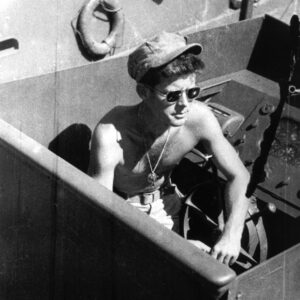
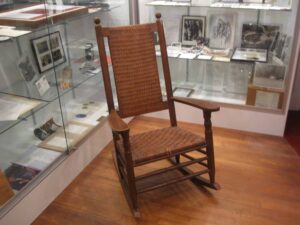 John F Kennedy, who at the time was still our future president, had to “fight” his way into war. His father believed it would make his son more “marketable” for a political run that would eventually land him in the White House. Joseph Kennedy wanted one of his sons to eventually be president, and I’m not sure he was particular about which one it was. He just knew that to have a chance, the “candidate” would have to have a military background. The reasons for his entrance into World War II really don’t matter now, because while he was in the service, he did his country proud, and even saved the lives of his PT-109 crew after a Japanese destroyer rammed them on August 2, 1943.
John F Kennedy, who at the time was still our future president, had to “fight” his way into war. His father believed it would make his son more “marketable” for a political run that would eventually land him in the White House. Joseph Kennedy wanted one of his sons to eventually be president, and I’m not sure he was particular about which one it was. He just knew that to have a chance, the “candidate” would have to have a military background. The reasons for his entrance into World War II really don’t matter now, because while he was in the service, he did his country proud, and even saved the lives of his PT-109 crew after a Japanese destroyer rammed them on August 2, 1943.
Future President Kennedy could have avoided the war completely, because he had back issues which were likely caused from a football injury. In addition, the fact that he was from a wealthy family could have been a big help in any effort he might have used to stay out of the war. He didn’t use the family’s money or influence to stay out, however. Before entering World War II, Kennedy graduated with honors from Harvard, and then still chose to serve. After being drafted to by the Navy, the physical toll on his back increased, including the physically demanding couple of days when the ship he commanded sank and he literally helped his crew survive.
Later, while he was serving as a young senator, Kennedy’s doctor prescribed a rocking chair to be used during his service in the senate. No matter where the pain initially started or what exacerbated the issue, by the time 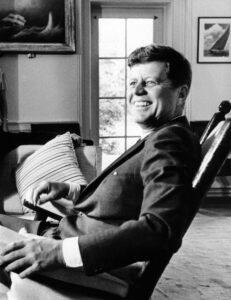
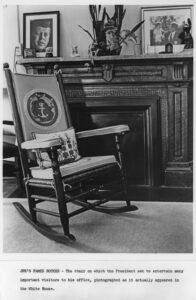 John F Kennedy was in the office of president, he was in constant pain. When he began using the rocking chair in 1955, Kennedy finally found a way for his muscles to relax by constantly being forced to expand and contract while sitting. The rocking chair he chose was made by P and P Chair Company, and Kennedy grew to love it. He finally found some relief, and he actually insisted that the chair be brought aboard Air Force One when he traveled. Later he just purchased many different chairs for his various residences. So impressed was Kennedy with this chair, that he also gifted dozens of the same chair to friends and colleagues. You might say that the rocking chairs from P and P Chair Company were unofficially known as the presidential rocking chairs.
John F Kennedy was in the office of president, he was in constant pain. When he began using the rocking chair in 1955, Kennedy finally found a way for his muscles to relax by constantly being forced to expand and contract while sitting. The rocking chair he chose was made by P and P Chair Company, and Kennedy grew to love it. He finally found some relief, and he actually insisted that the chair be brought aboard Air Force One when he traveled. Later he just purchased many different chairs for his various residences. So impressed was Kennedy with this chair, that he also gifted dozens of the same chair to friends and colleagues. You might say that the rocking chairs from P and P Chair Company were unofficially known as the presidential rocking chairs.
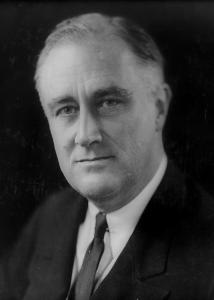
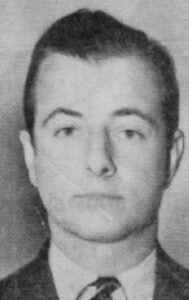 As a part of fallout of the Great Depression, and as a product of the “New Deal” ambitions of Franklin D Roosevelt, America came into the new era of Social Security, a plan to assign unique nine-digit numbers to some 26 million US workers. The plan didn’t exactly do what it was supposed to do, in a number of ways, and it has as to “social security,” it has been anything but. Social Security was not intended to be a national ID number, but it has turned out to be exactly that. It has been used by banks and insurance agencies, to track tax returns, and to identify college students. By the 1970s, Social Security numbers indexed a wealth of sensitive information in computer data banks, becoming a severe risk for identity theft, and prompting major privacy legislation. These types of security issues could not have been anticipated by the pre-computer, pre-internet, and pre-hacking America of the 1930s, when Social Security was founded.
As a part of fallout of the Great Depression, and as a product of the “New Deal” ambitions of Franklin D Roosevelt, America came into the new era of Social Security, a plan to assign unique nine-digit numbers to some 26 million US workers. The plan didn’t exactly do what it was supposed to do, in a number of ways, and it has as to “social security,” it has been anything but. Social Security was not intended to be a national ID number, but it has turned out to be exactly that. It has been used by banks and insurance agencies, to track tax returns, and to identify college students. By the 1970s, Social Security numbers indexed a wealth of sensitive information in computer data banks, becoming a severe risk for identity theft, and prompting major privacy legislation. These types of security issues could not have been anticipated by the pre-computer, pre-internet, and pre-hacking America of the 1930s, when Social Security was founded.
In November of 1936, the newly formed Social Security Board set out to assign those unique nine-digit numbers American workers. They called this a task “of a magnitude never before equaled in any Government or private undertaking.” The first Social Security number was issued on December 1, 1936, to a man named John David Sweeney Jr. Sweeney, a 23-year-old man was noted as saying that his retirement was “a long way off.” Since that time Social Security has suffered many types of abuse, and a gross miscalculation in funds, mainly stemming from the fact that with the legalizing of abortion, millions of Americans who would have eventually earned wages and paid into the program, were murdered, bringing a shortage of funds in unprecedented proportions. People will surely argue one or more of the points made here, but the facts remain.
A product of its time, the Social Security Number came about due to the economic wreckage of the Great Depression and the disastrous New Deal ambitions of Franklin D Roosevelt. People didn’t really understand the ramifications of the Social Security Numbers, because the program was overshadowed by the nation-changing program of which they were part. Nevertheless, those numbers would become affixed to nearly every American life over the next century, while spurring new uses of punch cards and filing systems, as well as all the new dilemmas around data and security. In the end, it would probably been better if we had never started it, but then I suppose that some type of national identification system was inevitable. We are a very large nation, and 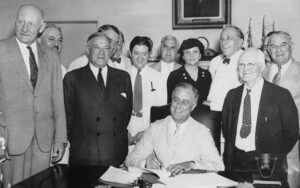
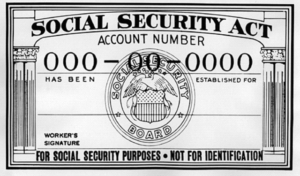 in my opinion, IDs should be used for many things, such as voting, flying, re-entry to our borders, and a host of other things that make each of us unique. Maybe Social Security numbers were the only way, or maybe we could have waited on this program until we could have found a more “secure” form of Social Security.
in my opinion, IDs should be used for many things, such as voting, flying, re-entry to our borders, and a host of other things that make each of us unique. Maybe Social Security numbers were the only way, or maybe we could have waited on this program until we could have found a more “secure” form of Social Security.
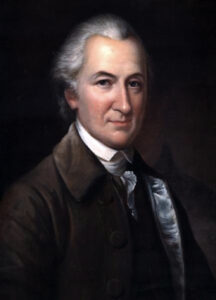
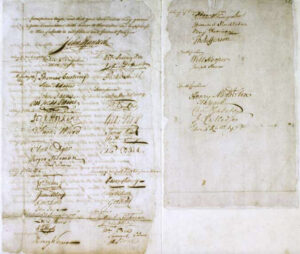 The American Revolutionary War actually began on April 19, 1775, with the Battles of Lexington and Concord. At that time, it wasn’t considered a full-blown war, and attempts were still being made by July 5, 1775, to avoid that full-blown war. The Olive Branch Petition, adopted by the Second Continental Congress on July 5, 1775, and signed on July 8th, was the final attempt to avoid the full-blown war between Great Britain and the Thirteen Colonies in America, that became known as the American Revolutionary War, and ended with full independence of the United States.
The American Revolutionary War actually began on April 19, 1775, with the Battles of Lexington and Concord. At that time, it wasn’t considered a full-blown war, and attempts were still being made by July 5, 1775, to avoid that full-blown war. The Olive Branch Petition, adopted by the Second Continental Congress on July 5, 1775, and signed on July 8th, was the final attempt to avoid the full-blown war between Great Britain and the Thirteen Colonies in America, that became known as the American Revolutionary War, and ended with full independence of the United States.
It seemed that in the early days of the Revolutionary War, the main weapon was a volley of petitions and proclamations. The Second Continental Congress had already authorized the invasion of Canada more than a week earlier, but the Olive Branch Petition affirmed American loyalty to Great Britain, asking King George III to prevent further conflict. The petition was followed up with a July 6th Declaration of the Causes and Necessity of Taking Up Arms, making the success of the Olive Branch Petition unlikely in London. By August 1775, London officially declared the colonies to be in rebellion by the Proclamation of Rebellion, and the Olive Branch Petition was rejected by the British government. In fact, King George had refused to read it before declaring that the colonists were traitors.
The Second Continental Congress convened in May 1775. At that time, most and most delegates followed John Dickinson in his quest to reconcile with King George. He could not picture a world with an independent United States. I suppose there are always those people without a vision for the future. However, there was a small group of delegates, led by John Adams, who could see that war was inevitable, and that we would need to become independent of Great Britain. Nevertheless, there is a right time, so they decided that the wisest course of action was to remain quiet and wait for the opportune time to rally the people. This allowed Dickinson and his followers to pursue their own course for a reconciliation that would ultimately never happen.
Dickinson was the primary author of the Olive Branch Petition, along with Benjamin Franklin, John Jay, John Rutledge, and Thomas Johnson, all of whom also served on the drafting committee. Dickinson claimed that the colonies did not want independence, but rather, wanted more equitable trade and tax regulations. He asked that the King establish a lasting settlement between the Mother Country and the colonies “upon so firm a basis as to perpetuate its blessings, uninterrupted by any future dissensions, to succeeding generations in both countries” beginning with the repeal of the Intolerable Acts. The introductory paragraph of the letter named twelve of the thirteen colonies, all except Georgia. The letter was approved on July 5 and signed by John Hancock, President of the Second Congress, and by representatives of the named twelve colonies. It was sent to London on July 8, 1775, in the care of Richard Penn and Arthur Lee. Dickinson hoped that news of the Battles of Lexington and Concord combined with the “humble petition” would persuade the King to respond with a counterproposal or open negotiations.
Finally, Adams wrote to a friend, telling him that the petition served no purpose. Everyone knew that war was inevitable. Adams said that the colonies should have already raised a navy and taken the British officials prisoner. Unfortunately, the letter was intercepted by British officials and news of its contents reached Great Britain at about the same time as the petition itself. British advocates of a military response used Adams’ letter to claim that the petition itself was insincere, and it was rejected. The hostilities which Adams had foreseen undercut the petition, and the King had answered it before it even reached him.
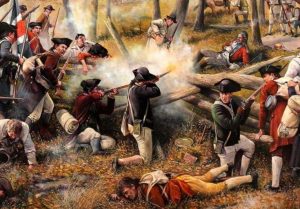
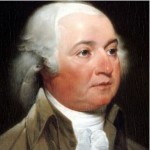
With the King’s refusal to consider the petition, came the opportunity Adams and others needed to push for independence. Now the colonists viewed the King as unwilling and uninterested concerning the colonists’ grievances. The colonists finally knew that they had just two choices…complete independence or complete submission to British rule. They chose complete independence, and the rest, as we all know, is history.

